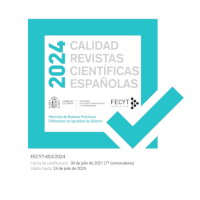Paradisiacal Hells : Subversions of the Mythical Canon in Neil Gaiman's "Neverwhere"
DOI:
https://doi.org/10.18172/cif.2111Keywords:
Postmodernism, Mythical Structure, Monomyth, Neil Gaiman, "Neverwhere"Abstract
According to certain theories, Postmodernism makes a conscious use of the cyclical nature of mythical narrations in response to the anxieties of fragmentation and isolation of the self. Hence, Postmodernism, through its own mechanisms and techniques, offers reconceptualizations of the mythical structure applied to the contemporary social conditions. The aim of this article is to analyse how Neil Gaiman consciously employs a mythical structure in his first novel, "Neverwhere" (1996), and how he subverts the final aim of this pattern. My contention is that "Neverwhere" is a postmodernist novel whose structure follows the cyclical pattern of the Campbellian monomyth. But the cyclical nature of the myth is utterly transformed in the novel.Downloads
Download data is not yet available.
Downloads
Published
2013-07-12
How to Cite
Romero Jódar, Andrés. “Paradisiacal Hells : Subversions of the Mythical Canon in Neil Gaiman’s ‘Neverwhere’”. Cuadernos De Investigación Filológica, vol. 31, July 2013, pp. 163-95, doi:10.18172/cif.2111.
Issue
Section
Articles
License
The authors retain copyright of articles and authorize CIF the first publication. They are free to share and redistribute the article without obtaining permission from the publisher as long as they give appropriate credit to the editor and the journal.
Self-archiving is allowed too. In fact, it is recommendable to deposit a PDF version of the paper in academic and/or institutional repositories.
It is recommended to include the DOI number.
This journal is licensed under a Creative Commons Attribution 4.0 International License














